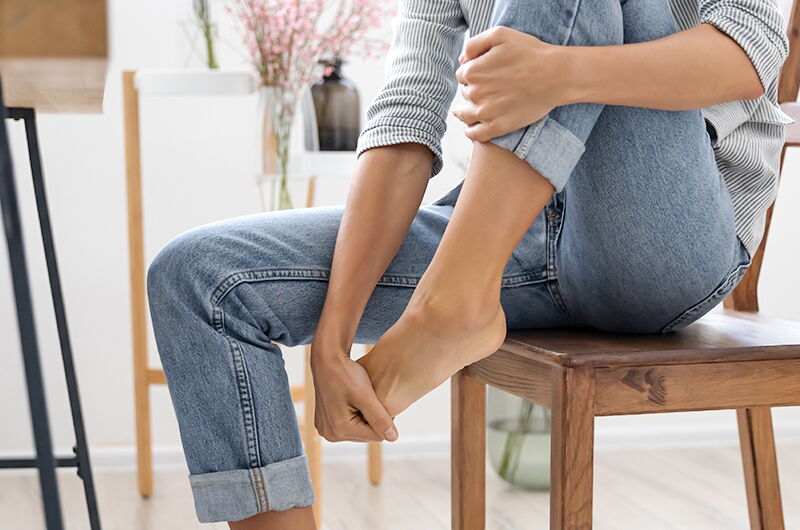Water retention can occur in parallel with various pathologies, even serious ones, such as heart failure or kidney pathologies and, in this case, it is necessary to contact qualified health personnel to treat the symptoms. In cases where, on the other hand, retention is due and linked to an irregular lifestyle, it is possible to obtain significant improvements by reviewing our eating habits, type and duration of training and evaluating targeted integration protocols.
What is water retention?
Heavy legs, swollen ankles and accumulation of fluids on the thighs and buttocks, which frequently worsen due to (wrong) workouts, are the most frequently encountered symptoms, especially in the female world, and which characterize the onset of water retention.

The water inside our body is mainly distributed between two compartments: the intracellular (ie inside the cells) and extracellular (ie outside the cells, ie between one cell and another). Water retention tends to worsen when there is an accumulation of liquids in the extracellular spaces, when the physiological balance between intra and extra cellular water is altered in favor of the latter.
Training to prevent and combat retention
The phenomenon of water retention is generally a transitory event. However, we can help him by implementing a training strategy suitable for improving - or not worsening - the condition of retention and accumulation of excess fluids. through the following measures:
- Do not exceed the volume administered and above all work as a buffer, ie without bringing the series to failure;
- Choose multi-joint exercises and medium-high loads (70 - 85%, 1RM, 1 Repetition Maximum);
- End the workout with a walk, which will improve venous return and facilitate the removal of accumulated substances that cause inflammation and, therefore, water retention;
- Take time to cool down;
- To avoid the feeling of heaviness in the legs, it is advisable to alternate exercises for the lower body with those for the upper body.
Water retention, nutrition integration
As for nutrition, it is essential to have an adequate intake of liquids. The LARN guidelines (Reference Levels of Nutrient and Energy Intake for the Italian population) suggest to take at least 2 liters of water per day for adult women and at least 2.5 liters of water per day for adult men. Furthermore, since inflammation is involved in the development of water retention, it is essential that the diet is overall balanced, rich in fruit and vegetables, which can guarantee a supply of vitamins and antioxidants that are also able to counteract the formation of free radicals. and inflammation. The choice of lipid sources rich in polyunsaturated fatty acids such as extra virgin olive oil (EVO) also contributes to this.

Once the training strategy has been optimized and nutrition is balanced, it is possible, if necessary, to strengthen and stimulate the mechanism for eliminating excess fluids through the use of food supplements. Among these, the most suitable are those containing:
- Picnogenol, a mixture of antioxidants extracted mainly from the bark of the maritime pine ( Pinus pinaster );
- Gotu kola;
- Bilberry extract;
- Rusco;
- Pilosella;
- Birch;
- Dandelion.
These components contribute to the elimination of excess fluids thanks to their draining effect which, when combined with the right training and proper nutrition, helps in a very important way to counteract water retention and the correct functioning of the microcirculation.
Conclusions
We have seen how water retention is a rather widespread problem, which in healthy individuals can be combated by maintaining a balanced and regular lifestyle, consisting of:
- Right training;
- Proper nutrition;
- Adequate integration, supported given by the natural substances that we find in plants and in the form of extracts.
Obviously, these considerations do not in any way want to be a simplification of a strategic approach that can also be very complex to implement, but a stimulus to information and the continuous growth of one's knowledge.
Bibliography
Bucciantini M, Leri M, Nardiello P, Casamenti F, Stefani M. Olive Polyphenols: Antioxidant and Anti-Inflammatory Properties. Antioxidants (Basel). 2021 Jun 29; 10 (7): 1044. doi: 10.3390 / antiox10071044. PMID: 34209636; PMCID: PMC8300823.
Belcaro G, Cesarone MR, Errichi BM, Ledda A, Di Renzo A, Stuard S, Dugall M, Pellegrini L, Rohdewald P, Ippolito E, Ricci A, Cacchio M, Ruffini I, Fano F, Hosoi M. Venous ulcers: microcirculatory improvement and faster healing with local use of Pycnogenol . Angiology. 2005 Nov-Dec; 56 (6): 699-705. doi: 10.1177 / 000331970505600607. PMID: 16327946.
Gulati OP. Pycnogenol® in chronic venous insufficiency and related venous disorders. Phytother Res. 2014 Mar;28(3):348-62. doi: 10.1002/ptr.5019. Epub 2013 Jun 15. PMID: 23775628.
Physical Conditioning and Strength Training Manual - Haff - Travis Triplett
The personal trainer manual - Beachle Earle
The women’s book: Volume 1; Lyle McDonanld
https://sinu.it/2019/07/09/acqua/ - LARN - Reference levels of intake for the Italian population: WATER.
